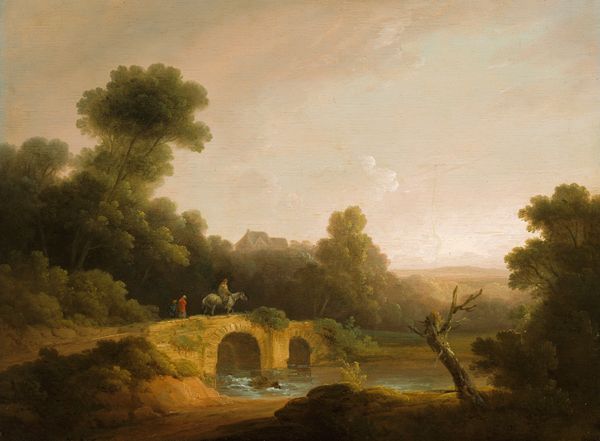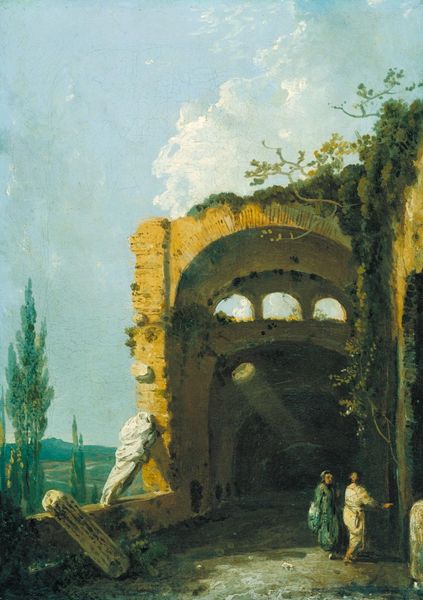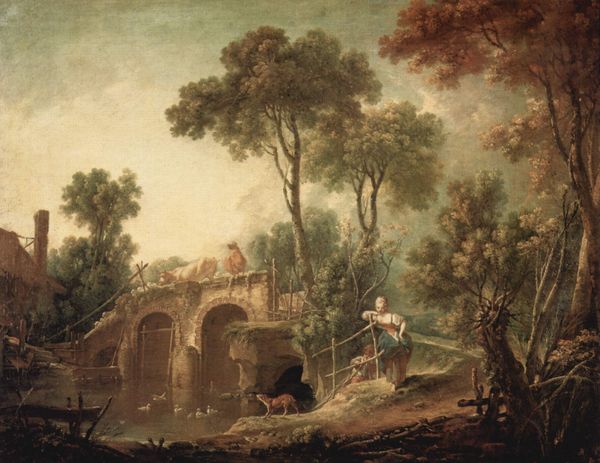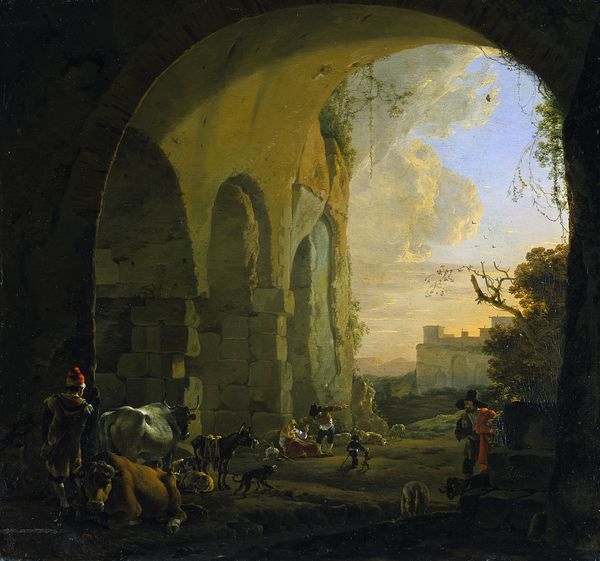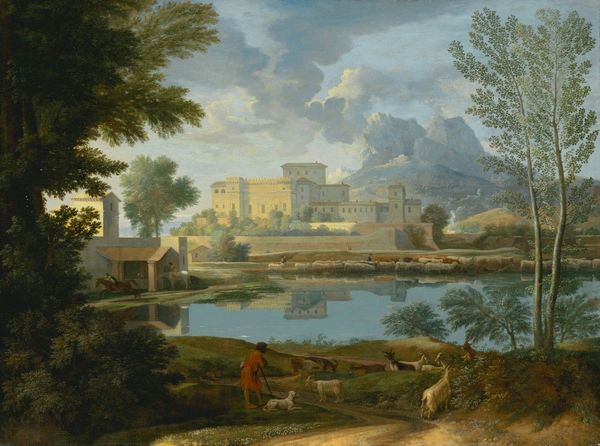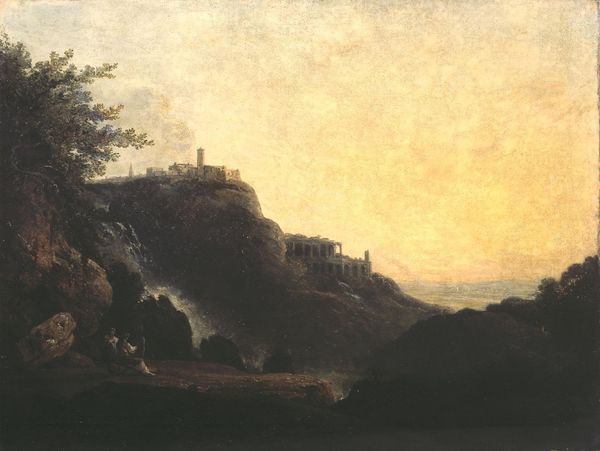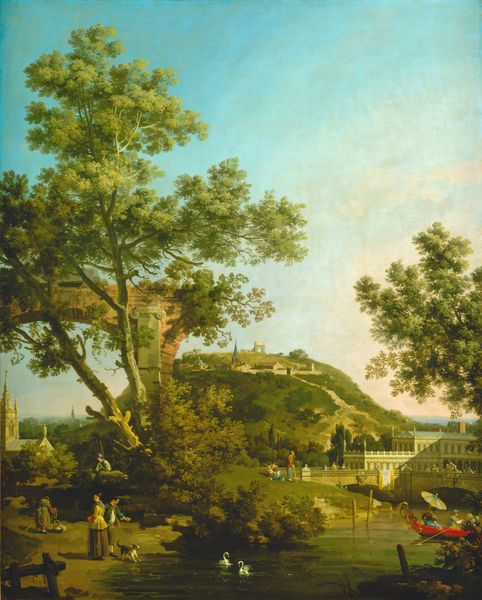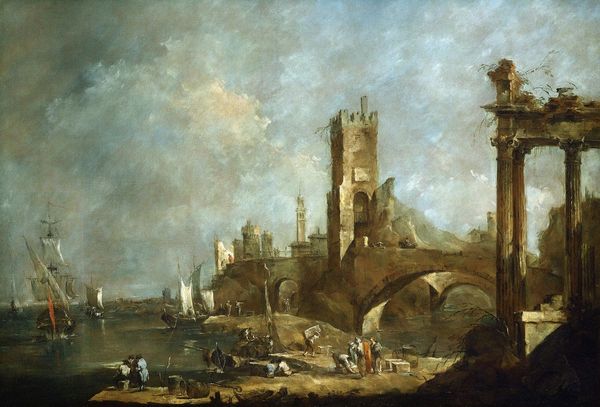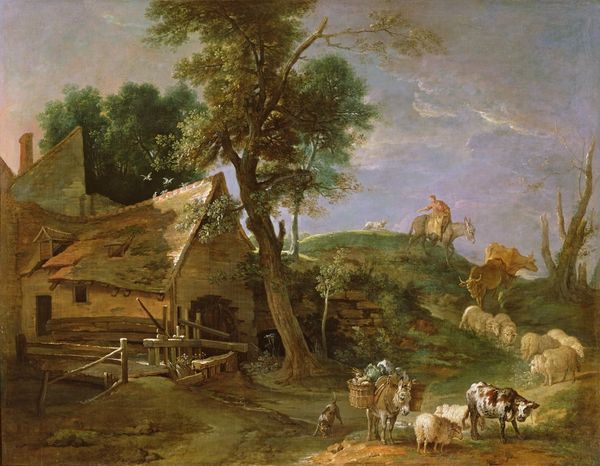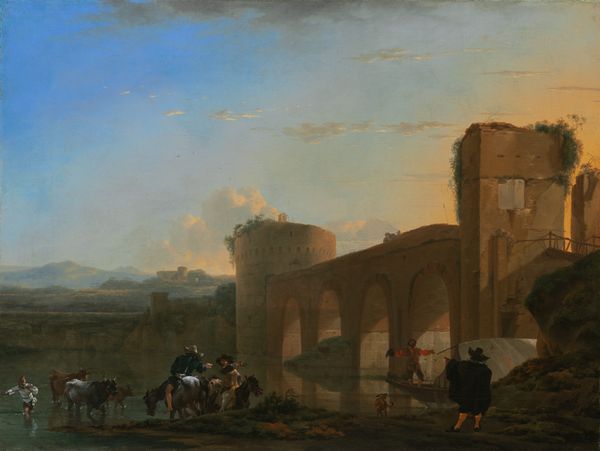
Dimensions: support: 356 x 254 mm frame: 490 x 392 x 75 mm
Copyright: CC-BY-NC-ND 4.0 DEED, Photo: Tate
Editor: Here we have Richard Wilson's "Hadrian's Villa." I’m struck by how the crumbling architecture contrasts with the serene landscape. What visual elements stand out to you? Curator: The formal arrangement is quite deliberate. Note how Wilson uses the archway as a framing device, leading the eye into the landscape. Consider the interplay of light and shadow; observe how it models the forms and creates a sense of depth. How does the texture of the brushstrokes contribute to the overall effect? Editor: It really emphasizes the aged surfaces. So, the composition directs our gaze and the brushwork adds texture, both drawing us into the scene. Curator: Precisely. Wilson masterfully employs these formal elements. The calculated composition, with its subtle use of color and texture, constructs a visually compelling representation. Editor: Thank you. I've learned so much about analyzing the formal qualities in this landscape. Curator: My pleasure. It's essential to examine the intrinsic elements and their relationships.
Comments
Join the conversation
Join millions of artists and users on Artera today and experience the ultimate creative platform.
tate 6 months ago
⋮
This view is a pair to Maecenas’ Villa, shown nearby, which Wilson painted in England after his return from Italy in 1756. Both scenes are based closely on pencil sketches he made when he first visited the ancient ruins of Tivoli in around 1752-3. Wilson drew the Emperor Hadrian's Villa, which had once been the most extravagant of all Roman country-palaces, several times. The spectacular site of Tivoli was familiar to all travellers on the Grand Tour through the Roman poets, especially Virgil and Horace. It was also a favourite sketching-ground for artists from the seventeenth century onwards, a tradition which deeply influenced Wilson. Gallery label, April 2007

